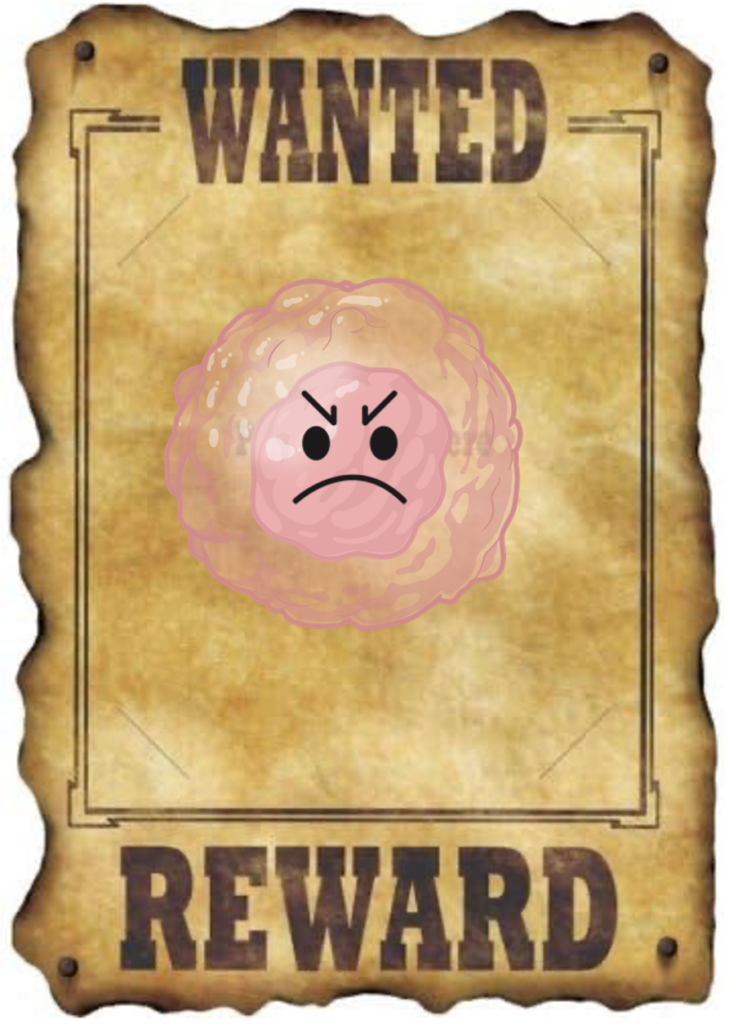By: Sophia Abusamra
A reward is being offered to the first person to catch killer prostate cancer cells. Please read the below briefing for case details:
WANTED: Killer Prostate Cancer Cells
REWARD: Funding for academic research and lifetime achievement in cancer research

Every 45 minutes one man dies from prostate cancer across the UK – greater than 12,000 men every year in the UK alone.1 Furthermore, 80% of men over the age of 80 are believed to have cancer cells in their prostate.2 But the tricky thing is – for most of those men, something else will kill them first. In fact, it’s an old adage that “more men die with prostate cancer then because of it.”3 So, if it’s not all prostate cancer that kills, we need a way to know which prostate cancers will kill. But how can we look into the future and predict if someone will be one of the lucky ones who will live for years with high quality of life, or if they’ve caught a “killer strain”, and the disease will progress quickly? Well, it seems like we have a killer to catch.
Let’s run through some potential suspects. To start, it’s already known that prostate cancer that is confined to the prostate, or ‘localised’, is very unlikely to kill, with almost 100% of patients surviving 5 years or more following diagnosis.4 The lethal, or “killer” cancer, is that which spreads outside of the prostate to other places in the body, or ‘metastatic’ disease. For this escaped cancer, only 32% of patients survive beyond 5 years.
So, we have an idea who the killer is: cancer that has escaped from its birthplace of the prostate. The next step is to profile our killer: fingerprint it (i.e., genetically sequence it) and start building a concrete case against it to attempt to eradicate its behaviour in the future. For prostate cancer, ‘catching’ the cancer has traditionally involved the painful punching of multiple needles into the prostate, which requires the use of sedation. More importantly, such needle biopsies grab the suspects that live within the prostate. This means that if our killer lives outside of the prostate, traditional biopsies are looking in the wrong place to catch our culprit.
This brings me to my topic of research: circulating tumour cells, or CTCs. CTCs are cancer cells that leave the prostate and travel through the bloodstream (or “circulation”). These escaped cells can then land in different parts of the body to “seed” sites of cancer outside of the prostate. In other words, CTCs are all potential killers, which have escaped from the prostate and are travelling through the bloodstream, lying in wait to put down their roots in a new place. So, it seems like capturing and analysing CTCs is our solution to finding and profiling our killer. More simply, we’ve narrowed down our list of suspects even further.
But now we get to the tricky part – capturing these suspects. CTCs are notoriously rare and tricky to catch, as in 1 millilitre of blood, it’s thought that there is only one CTC per 1 million white blood cells and per 1 billion red blood cells.5 So, we’re going to have to get a bit creative if we want to nab these suspects from the blood without them hiding from us. Well, there’s two ways we can “set traps” to nab these killer CTCs out of the blood stream: 1) physical methods, and 2) immune-affinity methods. Physical methods filter the blood of cancer patients to trap the “killers”, or CTCs, based on properties such as their size and “squishiness” (i.e., deformability). This is like profiling and catching our suspects based on their height, weight, and muscle-to-fat ratio. Immune-affinity methods use proteins called ‘antibodies’, which act like arms that reach out to grab external characteristics that are specific to our suspects only. This method profiles the suspected killers based on the ‘clothes’, ‘jewellery’, and ‘hairstyles’ that they dress in (or in scientific terms, cell surface antigens).
I work to set up these traps to catch the killer CTCs, and then use techniques to grow them outside of the body to better understand and study them. I also use methods to fingerprint the suspects by investigating their genetic material, in search of genes or “fingerprints” that can conclusively identify the killers. If we can find and fingerprint our killers, we can use this information to predict future culprits, and hopefully prevent them from causing prostate cancer deaths.
References
1. About prostate cancer. Prostate Cancer UK.
2. Chin HW, Kim J, Rasp G, Hristov B. Prostate Cancer in Seniors: Part 1: Epidemiology, Pathology, and Screening. Federal Practitioner. 2015;32(Suppl 4):41S. Accessed February 6, 2024. /pmc/articles/PMC6375450/
3. C J, Y P, SF B, RJ B. “More men die with prostate cancer than because of it” – an old adage that still holds true in the 21st century. Cancer Treat Res Commun. 2021;26:100225. doi:10.1016/J.CTARC.2020.100225
4. Survival of prostate cancer. Cancer Research UK.
5. Akpe V, Kim TH, Brown CL, Cock IE. Circulating tumour cells: a broad perspective. J R Soc Interface. 2020;17(168). doi:10.1098/RSIF.2020.0065